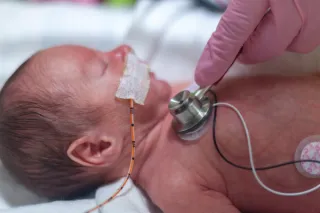
Welcome to Amanda's NICU Education




Hi! My name is Amanda. I'm a NICU nurse, Clinical Nurse Specialist, NICU Educator... basically your NICU BFF. If you want to talk NICU, I'm here for you! I love everything about NICU nursing and I'm eager to learn and share my knowledge with all my NICU friends.
I have been a NICU nurse since 2009 I am currently a Clinical Nurse Specialist in a Level IV NICU in Los Angeles.
I am passionate about educating the next generation of NICU nurses. I share my knowledge through platforms such as Instagram and Facebook and am excited to have you here on my website!
Click on the button below to sign up for my newsletter filled with NICU education and tips for all experience levels.

Not very many people love taking tests but as a self-acclaimed "forever student" who has taken (and passed) five different certification exams I am no longer afraid of tests! "Way to brag", you might be thinking but I want to help YOU pass your certification exam too!
Introducing Amanda's RNC-NIC Success digital course - your ultimate study companion!
Gain unlimited, on-demand access for life, ensuring you're primed to ace your certification exam.
I'm here to help you succeed and I can't wait for you to share with me that you PASSED the RNC-NIC EXAM!!!










Scalp Swelling
Understanding Newborn Scalp Swelling:
Caput, Cephalohematoma, and Subgaleal Hemorrhage
Few things make a newborn exam more nerve-racking than finding a swollen, bruised scalp. Is it harmless? Or is it something serious?
Knowing the difference between caput succedaneum, cephalohematoma, and subgaleal hemorrhage is essential for every NICU and newborn nurse — because subtle changes can signal big physiologic shifts.

Caput Succedaneum: The Most Benign of the Three
What it is:
Caput succedaneum is edema of the scalp caused by pressure on the presenting part during vaginal delivery, especially in vertex presentations.
Pathophysiology:
The pressure from the cervix or vaginal walls impairs venous and lymphatic drainage, leading to superficial fluid accumulation in the subcutaneous layer above the periosteum.
Key features:
Crosses suture lines (since it’s superficial)
Soft, pitting edema, and sometimes bruising
Usually resolves within 2–3 days
Because the swelling is purely edematous, it rarely causes complications — though it can contribute mildly to hyperbilirubinemia if significant bruising occurs.
💡 Quick Tip: If swelling crosses sutures and resolves quickly, think caput. If it’s firm and confined, think cephalohematoma.

Cephalohematoma:
A collection of blood
What it is:
A cephalohematoma is a collection of blood beneath the periosteum, confined by skull sutures. It often develops after mechanical trauma during delivery — such as vacuum or forceps use — and most commonly appears over one parietal bone.
Pathophysiology:
Rupture of blood vessels between the skull and periosteum causes localized bleeding, which the periosteum then traps, preventing the collection from crossing sutures.
Clinical findings:
Firm, tense swelling that may enlarge in the first few days
Typically limited to one bone (often unilateral parietal)
No fluctuation or pitting
No significant acute blood loss
Complications:
Hyperbilirubinemia from RBC breakdown
Late-onset anemia if the bleed is large
Rare infection (osteomyelitis or meningitis)
Parental teaching:
Parents should know that the swelling may appear to increase initially but typically resolves over weeks to months as the blood reabsorbs.
Ensure parents know the signs that need medical review:
Redness, warmth, or drainage
Induration
Fever or irritability
Sometimes, small calcified ridges remain temporarily after healing — these are benign and resolve with time.
Follow-up:
Babies with moderate to large cephalohematomas may need outpatient bilirubin and hematocrit monitoring, especially if jaundice or pallor develops.
🩺 If you love connecting pathophysiology to what you see at the bedside, subscribe to my free NICU newsletter — I share bite-sized education to strengthen your neonatal assessment skills. Join here →

Subgaleal Hemorrhage: A True Emergency
What it is:
A subgaleal hemorrhage occurs when blood collects in the space between the periosteum and the aponeurosis — a space that extends from the eyebrows to the nape of the neck.
Pathophysiology:
Traction and shearing forces during delivery (especially vacuum extraction) rupture emissary veins that bridge this large space. Unlike cephalohematoma, the bleeding is not confined by sutures — meaning a massive volume of blood can accumulate here.
Clinical signs:
Diffuse, boggy swelling that crosses sutures and enlarges after birth
Swelling may cause ears to push forward or eyelids to puff
Pallor, hypotonia, tachycardia, and poor perfusion
Increasing head circumference and delayed capillary refill
Possible respiratory distress or hypovolemic shock
Monitoring priorities:
Serial vital signs — watch for tachycardia and falling BP
Head circumference measurements every few hours
Frequent hematocrit and bilirubin levels
Ongoing neurological assessment for lethargy or irritability
Interventions:
Rapid recognition and treatment of shock (fluids, blood transfusion as needed)
Close collaboration with neonatology and transport if the baby is in a community setting
Strict documentation of trends in swelling, labs, and hemodynamics
Parental communication:
These cases can be frightening. Keep parents updated, explain the plan clearly, and prepare them for possible transfusion or intensive monitoring. Reassure them that recovery is possible with prompt treatment, though the swelling may persist for several weeks.
Bringing It All Together

Understanding these differences turns what could be a scary finding into a structured assessment. It’s not just about identifying swelling — it’s about anticipating complications, preventing shock, and supporting families through recovery.
🧠 Ready to deepen your neonatal assessment skills?
Join my Head-to-Toe Assessment Course for NICU Nurses, a 2-hour CE-accredited class that brings newborn physiology to life with photos, videos, and real case studies. Learn more here →
References
Gardner, S. L., Carter, B. S., Enzman-Hines, M. I., & Hernandez, J. A. (2021). Handbook of Neonatal Intensive Care: An Interprofessional Approach (9th ed.). Elsevier.
Verklan, M. T., & Walden, M. (2021). Core Curriculum for Neonatal Intensive Care Nursing (6th ed.). Elsevier.
Martin, R. J., Fanaroff, A. A., & Walsh, M. C. (2020). Fanaroff and Martin’s Neonatal-Perinatal Medicine: Diseases of the Fetus and Infant (11th ed.). Elsevier.

December 2023 Certification Review Webinar
NICU Certification Review



Ready to kickstart your journey to becoming a certified NICU nurse?
Look no further!
Grab my FREE E-Book packed with essential study and test-taking strategies for the RNC-NIC.
In the E-Book I give you the resources you need including the link to access the candidate guide, several types of books to study from, some of my favorite strategies, an outline of the content you should review, and a blank calendar for you to make your study plan!
Frequently Asked Questions About the RNC-NIC exam

What is the RNC-NIC?
The RNC-NIC is a competency-based exam that tests the specialty knowledge of nurses in the United States & Canada who care for critically ill newborns and their families.
The RNC-NICU is a nationally recognized certification that recognizes the registered nurse for their specialty knowledge and skill.

Who can take the RNC-NIC exam?
Nurses can take this exam after a minimum of two years experience in the NICU caring for critically ill newborns and their families.

Which books should I use?
I'm glad you asked! There are many excellent books to help you prepare for the RNC-NIC, I gathered ande describe each of them for you in my FREE e-book.
Is there a course to help me study?
Yes! Many hospitals host their own certification course and there are a few online courses. See my RNC-NIC test taking tips E Book for more information
What happens if I don't pass the exam?
If you don't pass the exam on your first try you can try again after 90 days. You will have to reapply after 90 days and pay a retest fee. There is no limit to the number of times you can take the exam (however a candidate can only sit for the exam twice per year).

Can I make more money if I take the RNC-NIC exam and get certified?
Yes! Many hospitals provide a raise or a bonus for nurses with specialty certifications. Hospitals also typically hire at a higher base salary when nurses have a certification.

Find me @amandasnicued on these channels or Email me
hey nurses don't miss out
© Copyright 2024. AmandasNICUEd. All rights reserved. | Terms & Conditions | Privacy Policy Contact: [email protected]

